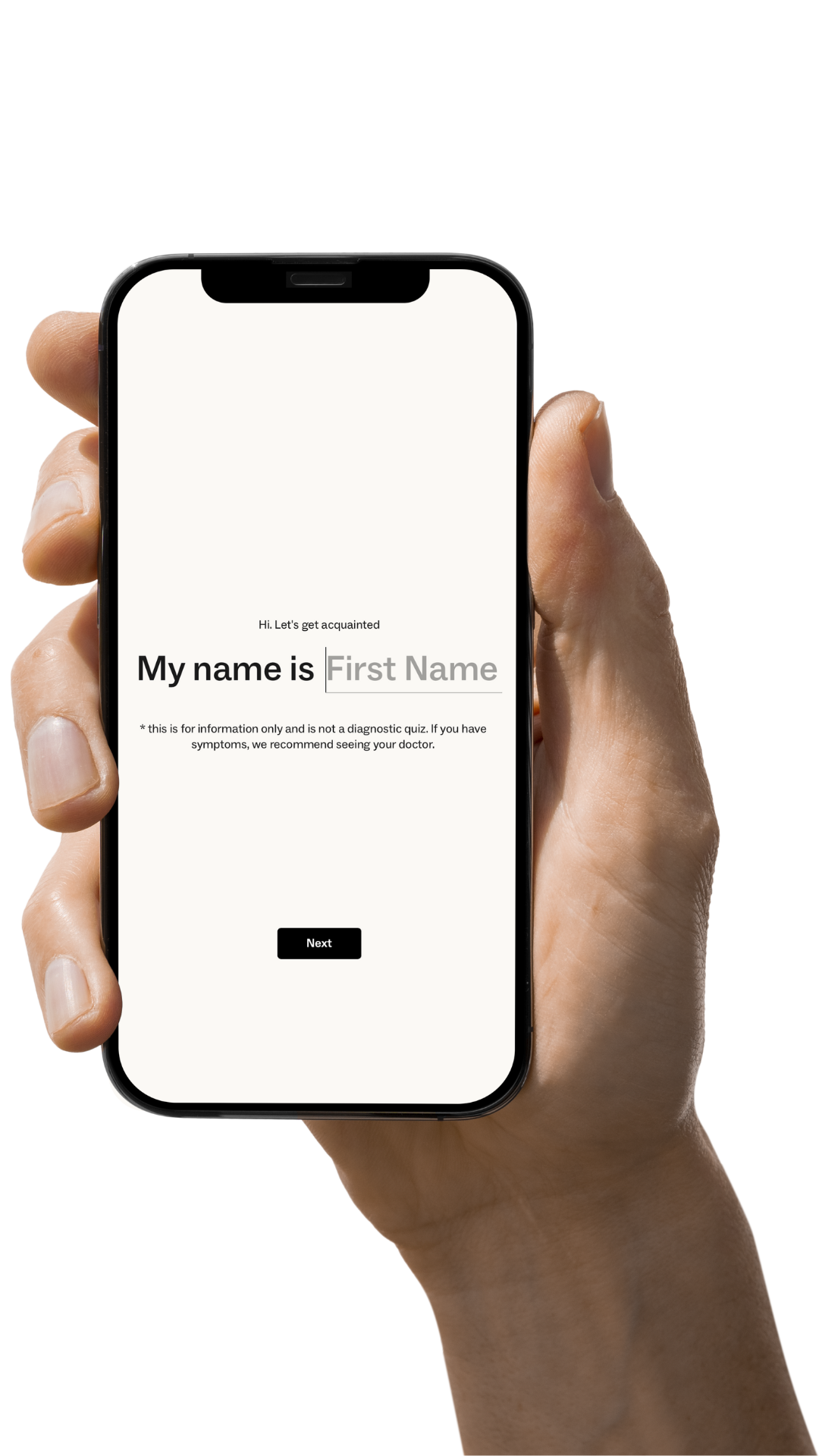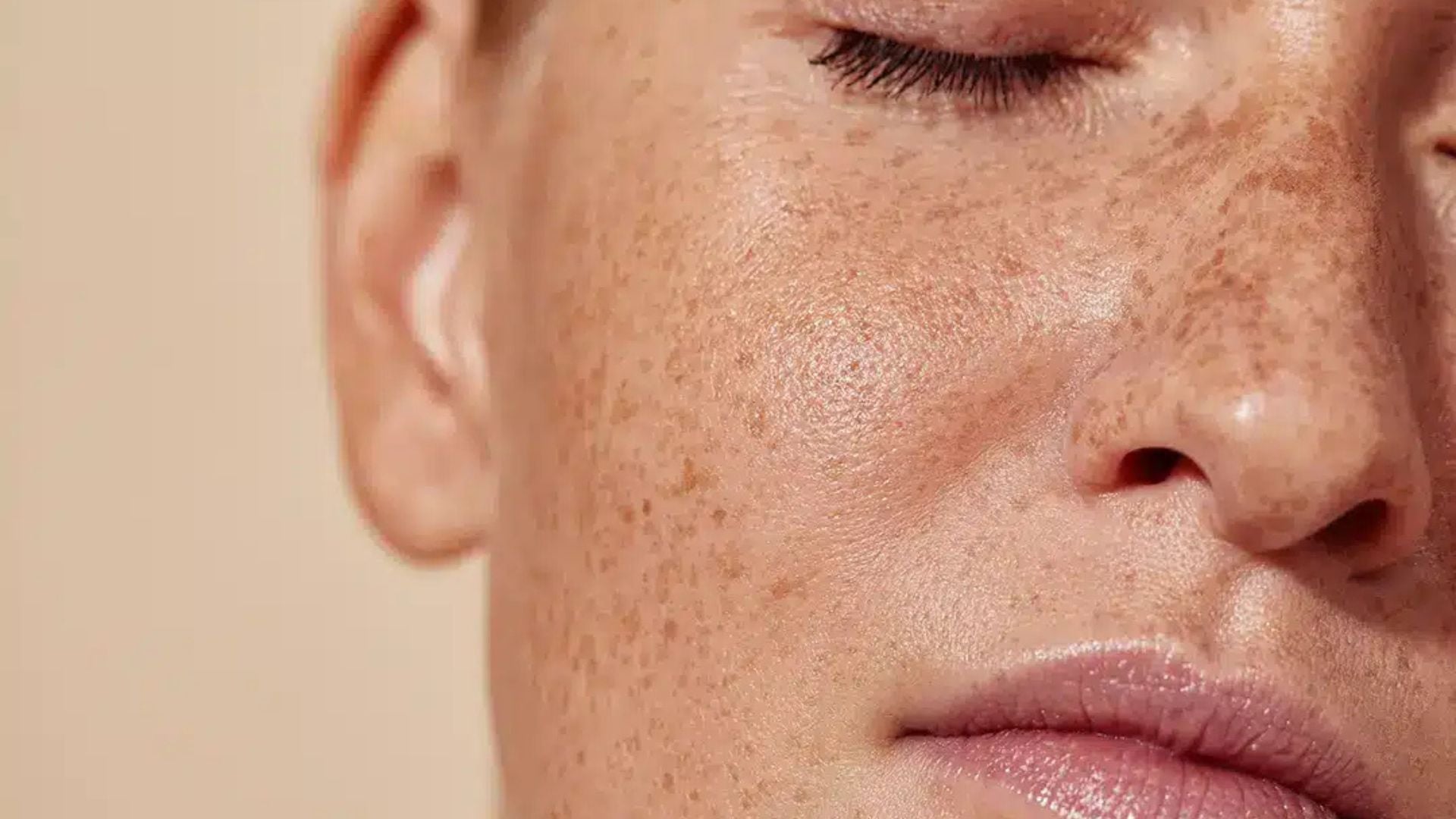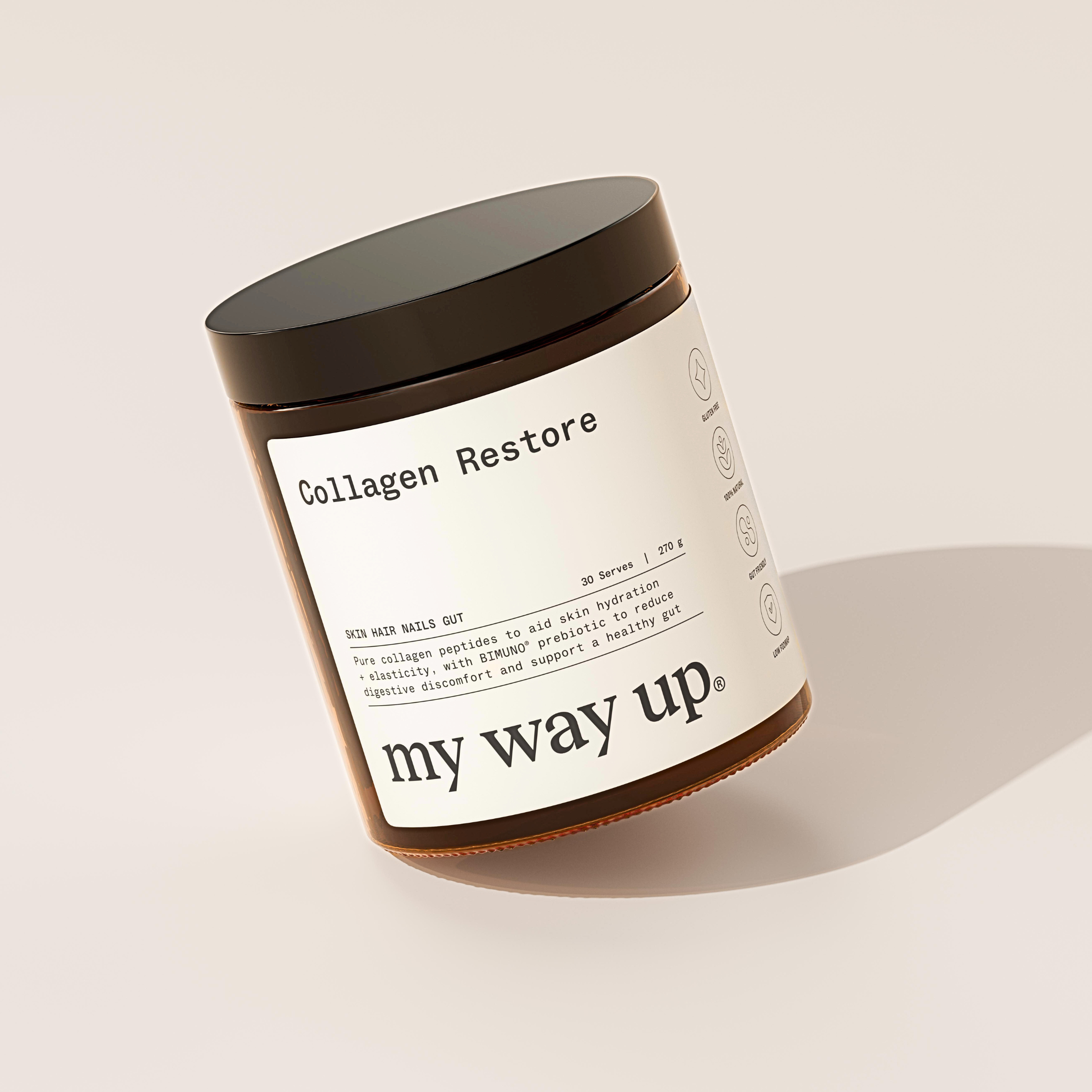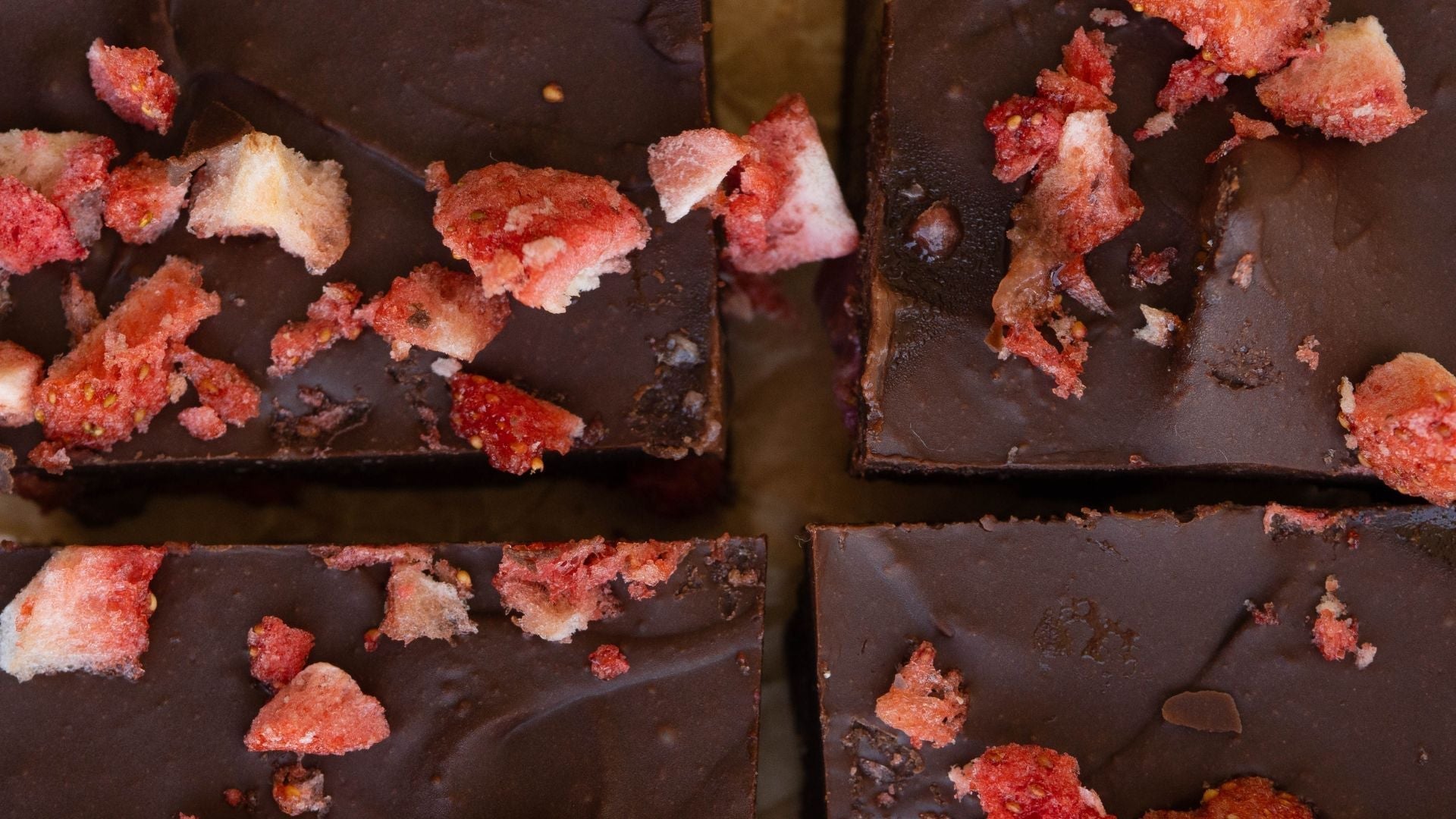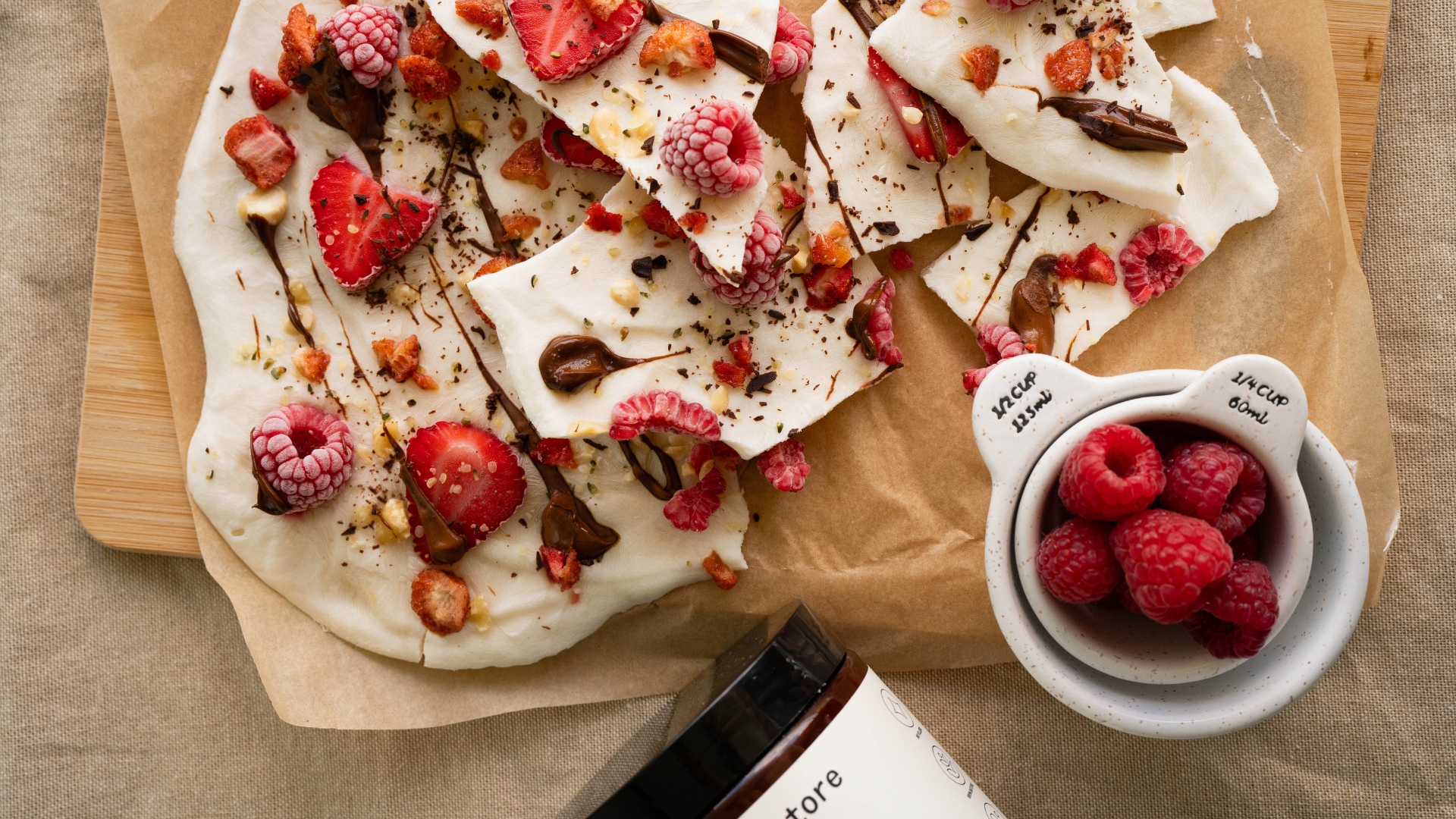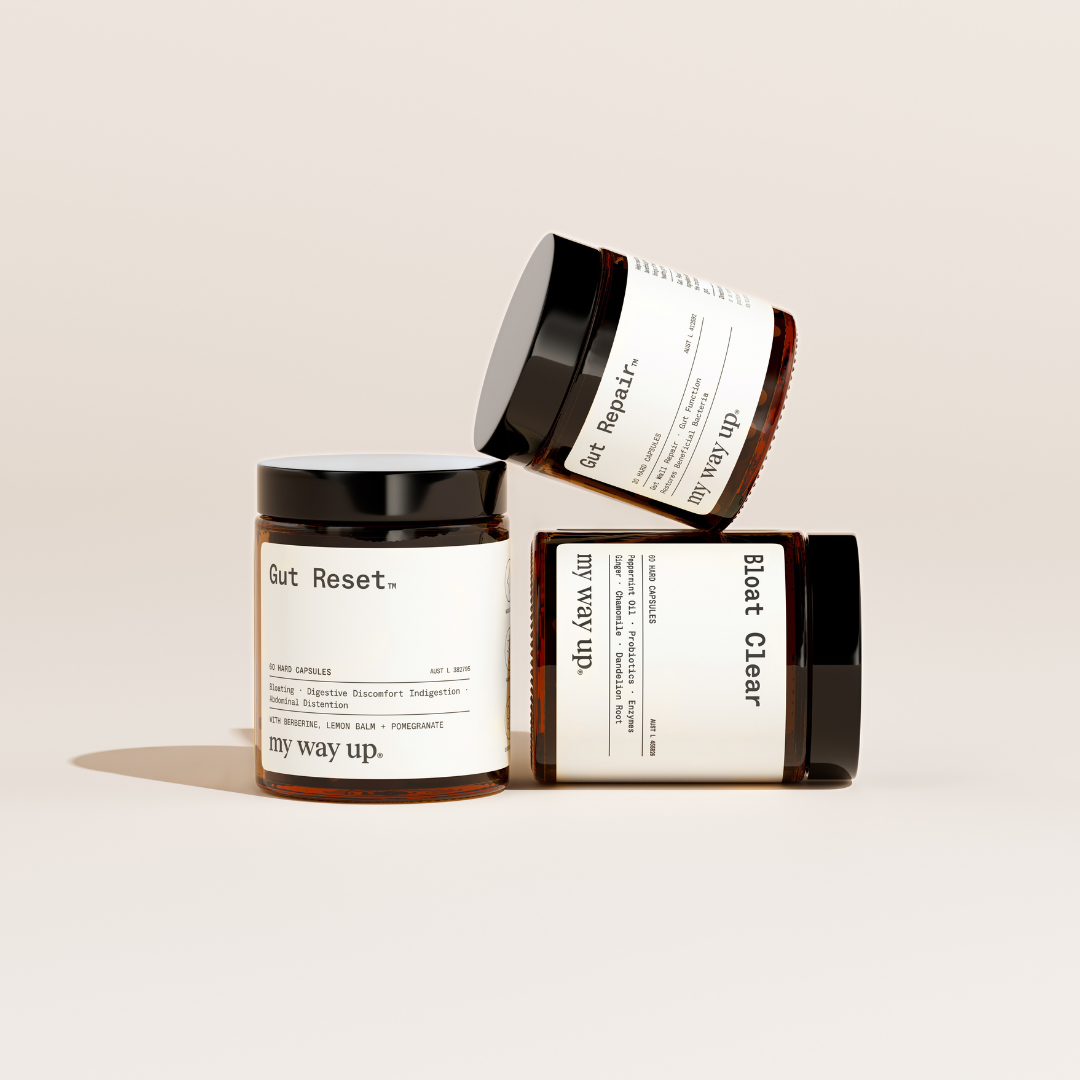1) Collagen Peptides
Collagen doesn’t “bleach” pigment; it reduces the reasons your skin keeps making it by supporting smoother, calmer repair.
When the skin’s extracellular matrix is strong, it repairs cleanly after irritation or breakouts—less lingering discolouration. .
Collagen peptides (rich in glycine, proline, hydroxyproline) support fibroblasts, dermal density, hydration, and barrier integrity. Better structure + calmer barrier = fewer inflammatory “echoes” that drive melanin.
Hyperpigmentation hangs around when healing is slow and inflamed. By speeding up repair and improving transepidermal water loss, peptides help post-blemish marks fade more predictably.
For best results, look for hydrolysed types I & III, a clinically validated daily dose; and take consistently over 8–12 weeks.
2) Bamboo Silica
Silica is a cofactor in collagen synthesis and helps organise the hydration matrix that keeps skin bouncy.
This is helpful because bamboo-derived silica supports cross-linking and resilience in the dermal matrix. More resilient skin = less micro-inflammation from daily friction/heat and cleaner remodelling after breakouts—two quiet drivers of persistent dark marks.
With better structure and hydration, skin recovers evenly, so color irregularities don’t “print” as easily.
Silica pairs beautifully with collagen peptides; think of it as the rivets to collagen’s beams.
3) Zinc
Zinc is the ultimate multitasker, its anti-inflammatory, an antioxidant cofactor, and a key player in wound repair.
Zinc can help with sebum production by regulating oil and soothing inflamed lesions, helping to reduce the #1 hyperpigmentation trigger—acne. Fewer inflamed spots = fewer dark marks to chase.
Zinc also offers antioxidant support by being a cofactor for superoxide dismutase (SOD)—one of the body’s front-line defenses against ROS that intensify melanogenesis.
Zinc ions can modulate the pigment-making enzyme, tyrosinase, activity and support a balanced response to UV and irritation, useful for the malenin pathways.
4) Galacto-Oligosaccharides (GOS)
When your gut is inflamed or out of balance, the immune system stays “turned up,” and skin becomes more reactive—fuel for hyperpigmentation.
As a targeted prebiotic, GOS (e.g., Bimuno®) selectively feeds Bifidobacteria and allies—in days—supporting a healthier microbiome and a calmer gut lining.
Less gut-driven inflammation leads to lower systemic cytokines and reduced oxidative stress. That means fewer “make melanin now” signals after minor irritation or UV.
And the good news is a happier gut often improves nutrient absorption (e.g., minerals), which further supports repair and antioxidant systems in the skin.
It's important to note GOS doesn’t target pigment directly; it reduces the inflammatory static that keeps melanocytes over-reactive.
How these four ingredients work together synergistically
Collagen peptides + bamboo silica → structure + hydration for orderly repair.
Zinc → calmer oil and inflammation, fewer PIH triggers, better antioxidant defence.
GOS → lower systemic inflammation so topicals and SPF actually deliver their full potential.
The combined effect is fewer new dark marks, faster fade of old ones, and a more even, “lit-from-within” tone.
